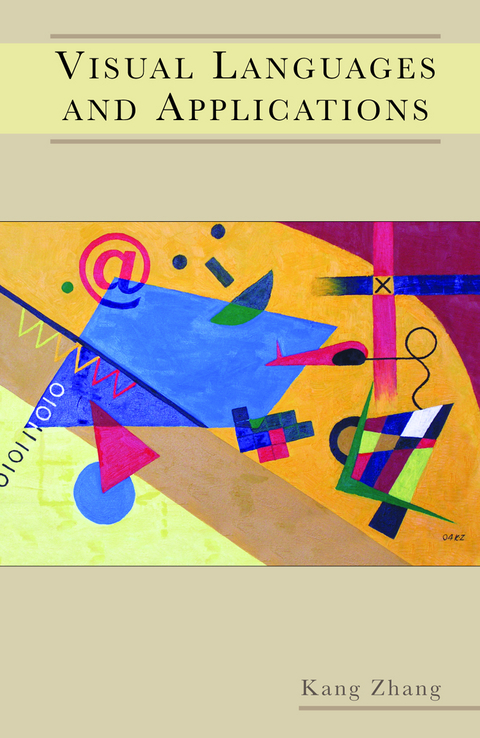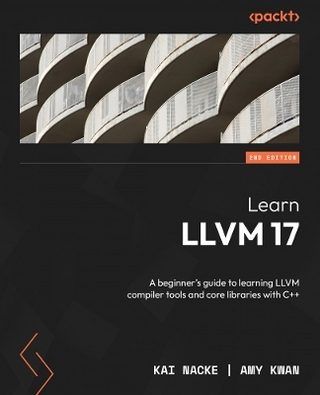
Visual Languages and Applications
Seiten
2007
Springer-Verlag New York Inc.
978-0-387-29813-9 (ISBN)
Springer-Verlag New York Inc.
978-0-387-29813-9 (ISBN)
Serving as an introduction to diagrammatical visual languages, this book covers the underlying theory of graph grammars to the applications in various domains. It provides a treatment of visual language generation and coverage of successful, as well as potential applications.
Visual languages have long been lit pursuitofeffective communication 00- tween human and machine. Today, they are suecessfully employed for e:nd~user progmmming, modeliog, rapid prototypmg, and design activities by people ofmany disciplines including arehitects, artists, children,engi~ neers, and scientists. Furthermore. with rapid advances ofthe Internet and Web technology,human~human communication through the Web or eleo- tronie mobile deviees is becoming more and moreprevalent This manuscript provides a comprehensive introduetion to diagmmmatiooI visual programming languages and the technologyofautomatie genemtion ofsnch languages. It covers a broad rangeofcontents from the underlying theoryofgraph grammars to the applications in various domains. Thecon~ tents were ex:l:l:aeted from the papers that my Ph. D. students and I have published in the last 10 years. and are updated and organized in a coherent fashion. The manuseript gives an in. -depth treatmentof all the topic areas. Pointers to related work and further readings are also faeilitated at the end ofeverychapterexeeptChapter 9.
Rather than describing how to program visually, the manuscript discusses what are visual programming languages, and how sooh languages and their underlying foundations can be usefully applied to other fields incomputer science that need graphs as the p:rimary meansofrepresentation. Assuming the basic knowledge of computer programming and compiler co:nstruetion, the manuscript can be used as a textbook for senior orgradu~ ate computer science classes on visual languages, or a reference book for programming language classes, practitioners, and researchers inthe related field. The manuscript cannot be completed without the helps of many people.
Visual languages have long been lit pursuitofeffective communication 00- tween human and machine. Today, they are suecessfully employed for e:nd~user progmmming, modeliog, rapid prototypmg, and design activities by people ofmany disciplines including arehitects, artists, children,engi~ neers, and scientists. Furthermore. with rapid advances ofthe Internet and Web technology,human~human communication through the Web or eleo- tronie mobile deviees is becoming more and moreprevalent This manuscript provides a comprehensive introduetion to diagmmmatiooI visual programming languages and the technologyofautomatie genemtion ofsnch languages. It covers a broad rangeofcontents from the underlying theoryofgraph grammars to the applications in various domains. Thecon~ tents were ex:l:l:aeted from the papers that my Ph. D. students and I have published in the last 10 years. and are updated and organized in a coherent fashion. The manuseript gives an in. -depth treatmentof all the topic areas. Pointers to related work and further readings are also faeilitated at the end ofeverychapterexeeptChapter 9.
Rather than describing how to program visually, the manuscript discusses what are visual programming languages, and how sooh languages and their underlying foundations can be usefully applied to other fields incomputer science that need graphs as the p:rimary meansofrepresentation. Assuming the basic knowledge of computer programming and compiler co:nstruetion, the manuscript can be used as a textbook for senior orgradu~ ate computer science classes on visual languages, or a reference book for programming language classes, practitioners, and researchers inthe related field. The manuscript cannot be completed without the helps of many people.
The Foundation — Graph Grammars.- Spatial Specification.- Multimedia Authoring and Presentation.- Data Interoperation.- Software Architecture Design.- Visual Web Engineering.- Visual Language Generation.- Conclusions and Future Perspective.
| Erscheint lt. Verlag | 20.3.2007 |
|---|---|
| Zusatzinfo | 109 Illustrations, black and white; XIV, 246 p. 109 illus. |
| Verlagsort | New York, NY |
| Sprache | englisch |
| Maße | 155 x 235 mm |
| Themenwelt | Mathematik / Informatik ► Informatik ► Programmiersprachen / -werkzeuge |
| Mathematik / Informatik ► Informatik ► Software Entwicklung | |
| Informatik ► Theorie / Studium ► Compilerbau | |
| ISBN-10 | 0-387-29813-4 / 0387298134 |
| ISBN-13 | 978-0-387-29813-9 / 9780387298139 |
| Zustand | Neuware |
| Haben Sie eine Frage zum Produkt? |
Mehr entdecken
aus dem Bereich
aus dem Bereich
a beginner's guide to learning llvm compiler tools and core …
Buch | Softcover (2024)
Packt Publishing Limited (Verlag)
49,85 €


